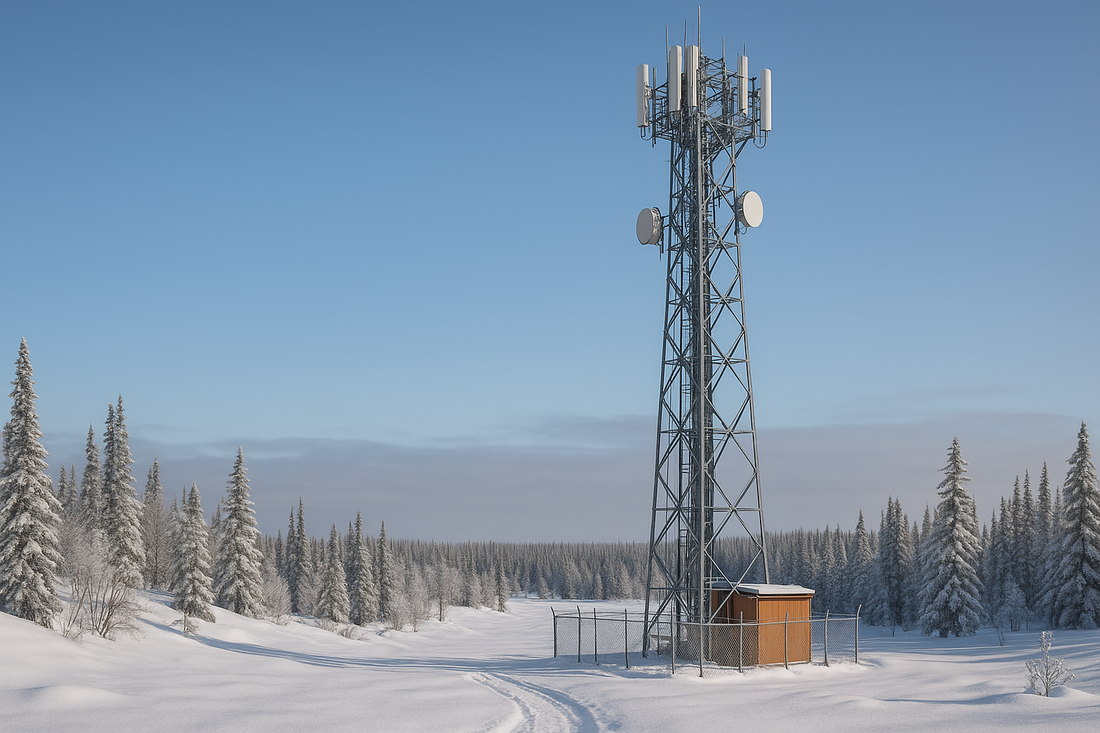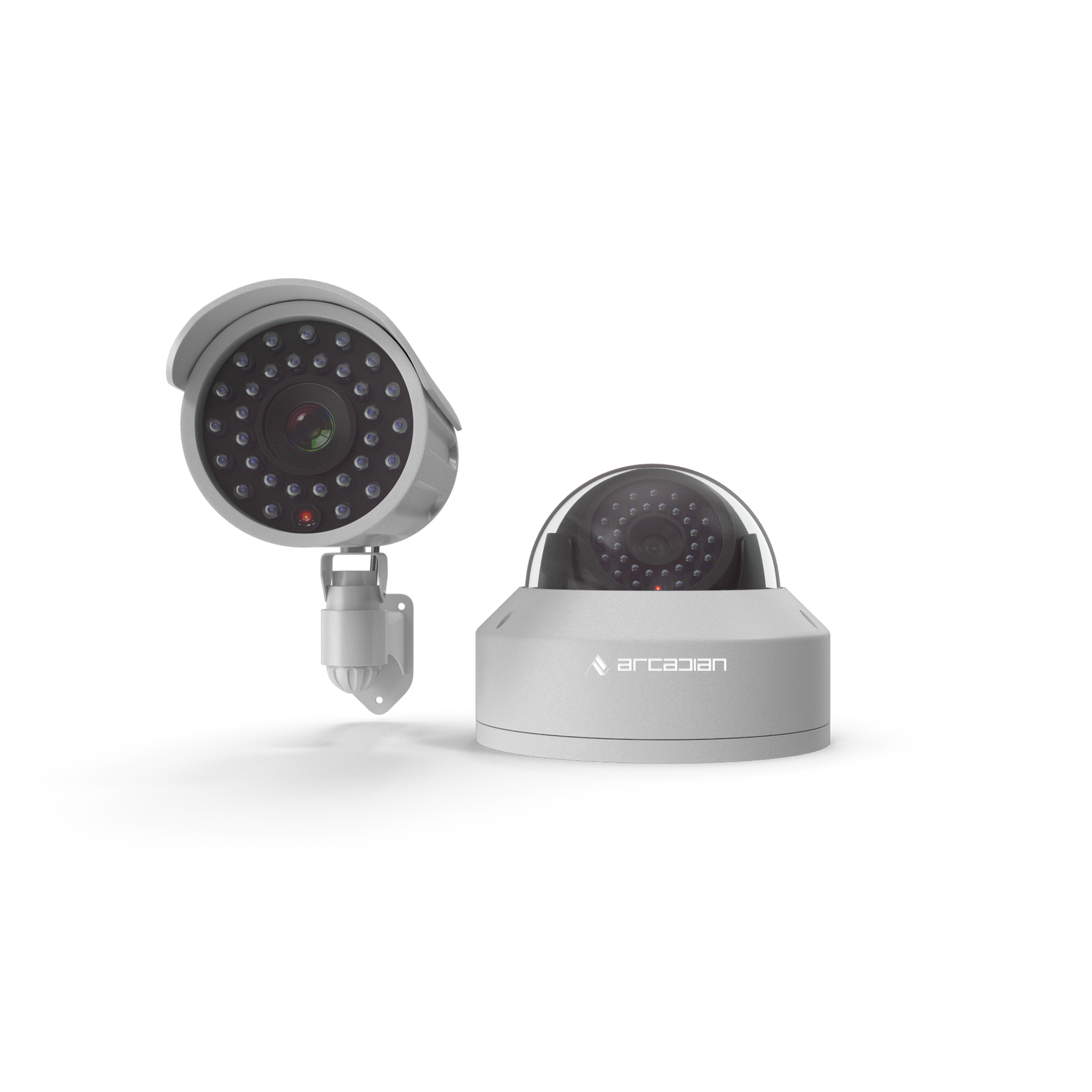Canada’s Big Bandwidth: How Rogers, Bell, and Telus Power Surveillance & Security Systems
From fiber optics to remote LTE towers, Canada's top telecoms are the silent backbone of modern surveillance. Here's how bandwidth shapes your security.

Introduction
When we think of surveillance systems—especially AI-driven ones like ArcadianAI—we often picture cameras, control rooms, and alerts. But there’s one critical component that doesn’t get nearly enough attention: bandwidth. In Canada, where climate, geography, and infrastructure vary wildly from urban cores to Indigenous and remote northern communities, your surveillance is only as strong as your internet connection.
This blog takes a deep dive into the major Canadian telecommunications providers—Rogers, Bell, Telus, Xplore, Northwestel, and others—and explores how their services power everything from 4K surveillance footage to real-time AI alerts. Whether you're a retail chain, school board, video monitoring company, or business with locations nationwide, understanding this layer of infrastructure is critical.
ArcadianAI, a cloud-native, AI-powered, camera-agnostic surveillance platform, is designed with this diversity in mind—whether you're on fiber in Toronto, LTE in Nunavut, or DSL in rural Saskatchewan, the platform intelligently adapts to your available bandwidth without compromising security.
Quick Summary / Key Takeaways
-
Canada’s top telecoms—Bell, Rogers, and Telus—offer nationwide fiber, DSL, cable, and LTE networks critical for modern video surveillance.
-
Bandwidth, latency, and reliability directly affect AI surveillance performance, remote access, and false alarm reduction.
-
For remote areas and Indigenous communities, providers like Northwestel and Xplore deliver unique connectivity options, including satellite and LTE failover.
-
ArcadianAI is optimized for adaptive bandwidth, using smart frame filtering and edge AI to minimize upload requirements without losing intelligence.
-
5G, fiber, and low-latency links are the future of real-time cloud surveillance.
Background & Relevance
The Bandwidth Behind the Lens
According to the CRTC's 2023 Communications Monitoring Report, 94% of Canadians have access to broadband with download speeds of at least 50 Mbps, but upload speeds lag, especially outside major urban areas. This matters deeply for surveillance, where camera footage must be uploaded continuously, often in HD or 4K, to a remote server or cloud-based AI.
Key pain points:
-
Upload bottlenecks affect real-time streaming and alerts.
-
High latency causes delays in AI-based detection.
-
Unreliable rural or northern connections can leave businesses blind.
And when it comes to enterprise-grade surveillance across multi-site operations, Indigenous lands, and remote assets, the wrong internet choice can make even the smartest camera system fail.
Core Topic Exploration
The Big Three—Bell, Rogers, Telus
Bell Canada
Coverage & Infrastructure
Bell operates one of Canada’s largest fiber and DSL networks and is expanding its Pure Fibre infrastructure across cities and towns. It also owns Bell Mobility, supporting LTE/5G coverage coast-to-coast.
Typical Surveillance Use Cases
-
Business fiber: Up to 3 Gbps symmetric (ideal for camera uploads).
-
DSL or Fibe-to-the-Node in suburbs: 10–100 Mbps upload.
-
LTE failover options for video monitoring backup.
Pros
-
Extensive national fiber network.
-
Reliable static IP options.
-
High SLA packages for businesses.
Cons
-
DSL fallback in many rural areas.
-
Complex pricing tiers for business plans.
Visit Bell for business connectivity
Rogers Communications
Coverage & Infrastructure
Rogers offers cable internet and LTE/5G services, especially dominant in Ontario, Atlantic Canada, and parts of Western Canada. Its Ignite business offerings include static IP and dedicated connections.
Surveillance Strengths
-
DOCSIS 3.1 cable provides 1 Gbps download and 30–50 Mbps upload.
-
Redundant LTE backup via Rogers Wireless.
Pros
-
Strong LTE coverage and bundled options.
-
Fast deployment for SMBs.
Cons
-
Asymmetric bandwidth (e.g., high download, limited upload).
-
Cable shared bandwidth can lead to congestion.
Telus Communications
Coverage & Infrastructure
Dominant in Western Canada and expanding eastward, Telus offers PureFibre, DSL, and mobile LTE/5G. Telus also has deep roots in Indigenous connectivity partnerships, especially in BC and Alberta.
For Surveillance
-
940 Mbps symmetric fiber is ideal for multi-camera setups.
-
Business SmartHub offers LTE or 5G fallback in remote deployments.
Pros
-
Fiber reliability is excellent in covered zones.
-
Proactive customer support for B2B.
Cons
-
DSL or LTE fallback in rural BC/Alberta.
Regional & Rural ISPs
Xplore (Formerly Xplornet)
Type: Fixed Wireless, Satellite, LTE
Focus: Rural and remote connectivity
-
Offers 10–50 Mbps upload depending on plan and tech.
-
Key for farms, northern towns, Indigenous communities.
Pros
-
Nationwide reach via satellite and towers.
-
Hybrid fiber-wireless expansion underway.
Cons
-
Higher latency (especially for satellite).
-
Less stable for real-time AI streaming.
Northwestel
Focus: Yukon, Northwest Territories, Nunavut
Parent: Bell Canada
Technology: Satellite, microwave, fiber (select towns)
-
Backbone provider for many Arctic surveillance projects.
-
Offers IP-based bandwidth packages for government and businesses.
Challenges
-
Harsh climate leads to instability.
-
Data caps or limited symmetrical speeds can be a hurdle.
Northwestel Business Solutions
Comparisons & Use Cases
Surveillance Bandwidth Requirements by Camera Type
| Camera Resolution | Upload Bandwidth (per cam) | Example Use Case |
|---|---|---|
| 1080p @ 15fps | 1.5–2 Mbps | General indoor surveillance |
| 4K @ 20fps | 4–6 Mbps | Retail entrances, parking lots |
| AI w/Smart Filter | 0.5–1 Mbps | With ArcadianAI’s Ranger pre-filtering |
With ArcadianAI, even lower-speed connections (e.g., 5 Mbps upload) can support 4–6 cameras using AI motion filtering, edge compression, and smart frame sampling.
Reliability & SLA Comparison Table
| Provider | Max Upload (Symmetric) | Rural Coverage | LTE/5G Failover | Uptime SLA (Biz Tier) |
|---|---|---|---|---|
| Bell | 3 Gbps | Medium | Yes | 99.9% |
| Rogers | 50 Mbps (asym) | Low–Medium | Yes | 99.9% |
| Telus | 940 Mbps | High in West | Yes | 99.99% |
| Xplore | 10–50 Mbps | Very High | Yes (LTE) | ~99% (variable) |
| Northwestel | Up to 15 Mbps (north) | Very High | Satellite backup | 98–99% |
Common Questions (FAQ)
Q: Can I run AI surveillance over LTE?
Yes—with ArcadianAI, edge filtering and smart frame compression reduce bandwidth usage. LTE can support 2–4 cameras per location reliably, especially with motion-triggered uploads.
Q: Is cable internet (e.g., Rogers) good for surveillance?
It depends. Cable offers decent upload speeds (30–50 Mbps), but the shared bandwidth model means quality can degrade during peak hours. Use with caution for critical locations.
Q: What’s the best for Indigenous or Northern surveillance?
Northwestel and Xplore are key, but should be paired with AI-based filtering like ArcadianAI’s Ranger to avoid overwhelming limited bandwidth.
Q: Is fiber always the best?
Yes, where available. Symmetric fiber (equal download/upload) is the gold standard for cloud video surveillance and multi-camera systems.
Q: What if I need 24/7 remote viewing?
Choose a provider with static IP, 99.9% SLA, and LTE failover—or partner with ArcadianAI, which supports smart buffering and bandwidth-aware streaming.
Conclusion & CTA
Canada's telecommunications giants—Rogers, Bell, and Telus—are doing more than providing TV and mobile plans. They're now the backbone of modern security infrastructure, especially in a world where cloud surveillance and real-time AI analysis are replacing legacy NVRs and DVRs.
Whether you’re managing hundreds of cameras across a franchise, securing a cannabis dispensary, or protecting remote assets in the Yukon, your surveillance performance is only as good as your bandwidth.
ArcadianAI’s platform was designed for this diversity. It’s smart, adaptive, and camera-agnostic, capable of making even low-bandwidth setups viable for powerful AI detection and analytics.
🔐 Want to see how it performs on your existing connection?
Get a personalized demo now:
👉 https://www.arcadian.ai/pages/get-demo

Security is like insurance—until you need it, you don’t think about it.
But when something goes wrong? Break-ins, theft, liability claims—suddenly, it’s all you think about.
ArcadianAI upgrades your security to the AI era—no new hardware, no sky-high costs, just smart protection that works.
→ Stop security incidents before they happen
→ Cut security costs without cutting corners
→ Run your business without the worry
Because the best security isn’t reactive—it’s proactive.








